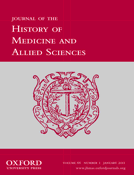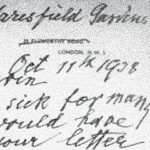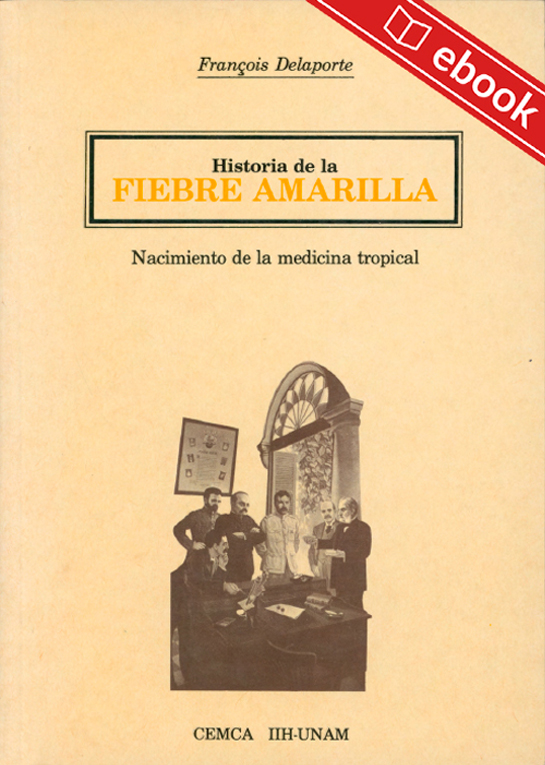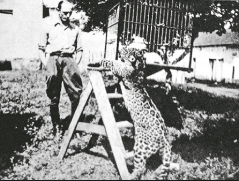September, 1st, 2020
Over the course of the twentieth century the cesarean operation became an increasingly common procedure. In the eighteen century, however, the operation was performed almost exclusively on women already deceased.

Baptism Through Incision: The Postmortem Cesarean Operation in the Spanish Empire (Penn State University Press, 2020)
In 1786, Guatemalan priest Pedro José de Arrese published a manual instructing cesarean operation on the bodies of recently deceased pregnant women in order to extract the fetus while it was still alive. The main goal was to cleanse the unborn child of original sin and ensure its place in heaven.
Using the eighteenth-century Guatemala as a case study, the book Baptism Through Incision presents Arrese’s complete treatise and explores the intersections of faith and science in the early modern world.
Martha Few, Zeb Tortorici, and Adam Warren received a Collaborative Research Fellowship from the American Council of Learned Societies (ACLS) between 2017 and 2019 for a project on the history of the postmortem cesarean operation in Spain’s colonies.
Baptism Through Incision constitutes the first of two publications that will come out of this fellowship.
This interview engages the work they completed for the book, focusing on the text’s value as a teaching resource and on their plans for further research, writing, and publication.

Martha Few is professor of Latin American history and Gender, Women’s, and Sexuality Studies at Pennsylvania State University. Zeb Tortorici is associate professor in the Department of Spanish and Portuguese Languages and Literatures at New York University. Adam Warren is Associate Professor of Latin American history in the Department of History at the University of Washington, Seattle.
What led you three to become interested in the history of the postmortem cesarean operation in the Spanish Empire?
The three of us, all historians of colonial Latin America, got to talking about postmortem cesarean operations during a wonderful workshop in 2013 organized by Dr. Fiona Clark at Queen’s University Belfast titled The Paths of Medical Un/Orthodoxy: Colonial Latin America and its World. Each of us came to the topic, and to the work of Father Pedro José de Arrese, which forms the centerpiece of Baptism Through Incision, independently through our shared interests in the intersections of science, medicine, gender, sexuality, and religion in colonial Latin America. Arrese’s 1786 Rudimentos fisico-canonico-morales . . . sobre el bautismo de fetos abortivos, y operacion cesarea en las mugeres, que mueren embarazadas (Physical, Canonical, and Moral Principles . . . On the Baptism of Miscarried Fetuses and Cesarean Operation in Women Who Die Pregnant) engages all of these themes in provocative ways. Adam had not worked with the text before, but learned of it while studying a parallel text from Peru, Francisco González Laguna’s 1781 El zelo sacerdotal para con los niños no-nacidos (Priestly Zeal for the Unborn Children), on which he published a 2009 article in the Bulletin of the History of Medicine. Martha came across the text through her own work on colonial and Indigenous medicine for her book For All of Humanity: Mesoamerican and Colonial Medicine in Enlightenment Guatemala (University of Arizona Press, 2015). Adam and Martha ended up presenting on panels together and becoming good friends. They each also developed a friendship with Zeb Tortorici, who consulted Arrese’s text in 2011 at the John Carter Brown Library in Providence, RI, USA, while researching abortion and infanticide in colonial New Spain. The outcome of those conversations in Belfast, alongside our individual research efforts, led the three of us to agree to work together on the first English-language translation and publication of the Arrese manual.
We picked Arrese’s manual over González Laguna’s Peruvian treatise because it is ultimately more engaging and accessible. Both formed part of efforts among religious and secular authorities in many parts of Europe and Latin America to mandate postmortem cesareans for women who were pregnant when they died in order to baptize the fetus. According to Arrese, the purposeful or inadvertent burial of a deceased pregnant woman amounted to fetal homicide: “[Such] burials have resulted in an increasing number of homicides [perpetrated against] living fetuses, killing them without the benefit of Holy Baptism.” Arrese’s Physical, Canonical, and Moral Principles speaks directly to the transatlantic circulation of medical and moral knowledge about female bodies, obstetrics, and embryology in Europe and the Americas. He built on the work of Francesco Cangiamila and Antonio José Rodríguez, priests respectively in Sicily and northern Spain who had published extensively in the 1740s on the postmortem cesarean operation and fetal baptism, yet he and others also adapted their instructions to the local conditions of the Spanish Americas. In Guatemala, Arrese’s text informed actual episodes of cesarean operations recorded in colonial archives, while in Peru González Laguna’s work called for the spread of the procedure in the Andes in the aftermath of war but resulted in no known cases of its use there.
Baptism Through Incision places Arrese’s text alongside excerpts from González Laguna’s treatise as well as a wide range of other materials about the postmortem cesarean operation from different parts of the Spanish empire. These include published accounts in eighteenth-century newspapers (including the Gazeta de México, the Gazeta de Guatemala, and the Mercurio Peruano); an account of a cesarean operation performed on a living woman in Spain in 1753; instructional materials for midwives in Mexico on the cesarean operation and baptism; newspaper accounts of the cesarean operation’s use in missions in Mexico and Guatemala and in the city of Tucumán, Argentina; calls for the practice of the postmortem cesarean operation in response to wartime accounts of the killing of pregnant women in the Peruvian Andes; and instructions for performing the operation that circulated in the missions of California.
What were your goals in publishing Baptism Through Incision? How might the text be used, and what do you hope students will take away from reading it?
 Our main goal was to provide readers—primarily undergraduates students though graduate students and faculty as well—with the first English-language translation of Arrese’s text, which was beautifully rendered from the original Spanish by Dr. Nina M. Scott. We were particularly interested in Arrese’s text because it was both readable and short, especially in comparison to other postmortem cesarean treatises published in Spain and throughout its colonies. Although the language itself is complicated, the text is organized around a rhetorical device known as hypophora, in which the questioner answers his or her own question. The body of the text, in its question-and-answer format, thus reads as a dialogue that engages a whole range of medical and theological questions about life, death, surgery, duty, sin, baptism, and salvation that were pressing issues in the late eighteenth century. In this sense, while the text may focus on a peculiar topic, it speaks volumes about the nature of colonial society in Guatemala and elsewhere during the final decades of Spanish rule.
Our main goal was to provide readers—primarily undergraduates students though graduate students and faculty as well—with the first English-language translation of Arrese’s text, which was beautifully rendered from the original Spanish by Dr. Nina M. Scott. We were particularly interested in Arrese’s text because it was both readable and short, especially in comparison to other postmortem cesarean treatises published in Spain and throughout its colonies. Although the language itself is complicated, the text is organized around a rhetorical device known as hypophora, in which the questioner answers his or her own question. The body of the text, in its question-and-answer format, thus reads as a dialogue that engages a whole range of medical and theological questions about life, death, surgery, duty, sin, baptism, and salvation that were pressing issues in the late eighteenth century. In this sense, while the text may focus on a peculiar topic, it speaks volumes about the nature of colonial society in Guatemala and elsewhere during the final decades of Spanish rule.
The text also emphasizes a diverse range of themes including women’s morality, gender, religious devotion, priestly morality, and medical expertise. One fabulous example is how Arrese’s text constructs and interprets gender. In Section IV of the text, he cites, for instance, as some of the root causes of women’s miscarriages “a woman’s lack of good judgment”; “lack of moderation and but little care of her health during the pregnancy”; “dances, which lead to agitation” and lead her “to abandon the modesty and restraint so characteristic of her sex”; “very tight dresses”; and, among other things, “harmful breezes, noxious breaths.” Such understandings of the causes of miscarriage allow present-day readers to step back and frame Arrese’s text, which is primarily about the need to baptize fetuses of deceased would-be mothers, in terms of larger colonial anxieties and imperial ideologies about women’s bodies, regulating pregnancy and women’s access to abortion, and constructing the fetus—especially that of recently converted Indigenous women—into a colonial subject. Performing cesareans on deceased female bodies for fetal baptism was thus a product of both medical and theological debates that took place throughout the empire as well as at the local level. The operation was intended to serve spiritual ends along with the larger goal of maintaining and propagating an empire managed by ruling elites, in part, by trying to ensure that the souls of colonized subjects’ infants would be eternally brought into the fold of Catholicism. We also found the variety of practices and liquids used in baptism itself fascinating. In the absence of holy water, all kinds of liquids including ink, rose water, broth, bleach, and beer could be used with the Church’s approval!
Perhaps most importantly, we hope that Baptism Through Incision reveals to undergraduate students that ideas about the fetus have never been stable; instead, they have shifted dramatically over time and have been shaped by concerns in earlier periods that differ from those that inform current debates. What struck us the most about Arrese’s text and other materials included in translation was the variety and ambiguity of terminology used to describe a fetus versus a baby. Today, in English, we make very stark distinctions between the idea of the “fetus” as inhabiting the womb and the “baby” or “infant” existing outside the womb. In eighteenth-century Spanish, however, the term for fetus (feto) could refer to a fetus either inside or outside of the womb. Similarly, the term criatura, which in modern Spanish is equivalent to “child” or “infant” in English, could refer in the eighteenth century to a fetus, a baby, an infant, or a child. We thus had to be very attentive to context in our translations and decided early on not translate either term as “child,” as some scholars have done.
 In this sense, the eighteenth-century works by Arrese and others that depict the fetus as alive, ensouled, and requiring salvation through baptism do not reflect immutable, widely accepted truths within Catholic societies or even the Catholic Church itself. Instead, they were preceded by ancient legal texts and works in medieval Christendom based on precedent, in which authors neither described the fetus as alive nor considered it to be a being separate from the mother’s body. Questions of legal standing, inheritance, and salvation generated different ideas about the fetus in different historical and cultural contexts. Arrese’s treatise and the other texts included in this Baptism Through Incision thus reflect a particular moment of debate in a longer, gradual process of characterizing and recharacterizing the fetus according to shifting criteria. This process, moreover, did not move in a linear direction over time, nor did it ever lead to consensus about how the fetus should be understood in any sort of transhistorical fashion. We show our readers that this is still the case in debates about how we perceive and depict the fetus today. Recognizing that these ideas are always locally situated and historically contingent can help us understand the complicated nature of reproductive politics in both the past and present with greater nuance.
In this sense, the eighteenth-century works by Arrese and others that depict the fetus as alive, ensouled, and requiring salvation through baptism do not reflect immutable, widely accepted truths within Catholic societies or even the Catholic Church itself. Instead, they were preceded by ancient legal texts and works in medieval Christendom based on precedent, in which authors neither described the fetus as alive nor considered it to be a being separate from the mother’s body. Questions of legal standing, inheritance, and salvation generated different ideas about the fetus in different historical and cultural contexts. Arrese’s treatise and the other texts included in this Baptism Through Incision thus reflect a particular moment of debate in a longer, gradual process of characterizing and recharacterizing the fetus according to shifting criteria. This process, moreover, did not move in a linear direction over time, nor did it ever lead to consensus about how the fetus should be understood in any sort of transhistorical fashion. We show our readers that this is still the case in debates about how we perceive and depict the fetus today. Recognizing that these ideas are always locally situated and historically contingent can help us understand the complicated nature of reproductive politics in both the past and present with greater nuance.
Where do you see your research project going from here?
Our larger project, building off Baptism Through Incision, seeks to trace and analyze the rise, spread, and eventual decline of the postmortem cesarean operation in the Spanish and Portuguese colonial worlds and in the nineteenth century. It will be a full-length scholarly monograph aimed at a more specialized audience, one that engages in a multi-sited analysis of the procedure’s adoption, adaptation, transformation, and rejection among different populations. The project centers on the postmortem cesarean operation texts that emerged in the eighteenth century from the key works by Cangiamila and Rodríguez, and that were then read and reworked for local needs in Spain and in colonial Spanish America—places like Mexico, Peru, and Guatemala– through the end of the colonial period and up to the mid-nineteenth century. We are widening the temporal lens as well to consider the ways that sixteenth- and seventeenth-century confessional manuals and other religious materials related to pregnancy, miscarriage, abortion, and infanticide informed and shaped the justification for the procedure, especially in colonial settings. Last but not least, we look to uncover the ways that postmortem cesareans informed and connected to modern understandings and practices of cesareans through an analysis of medical theses in Latin America, Spain, and the Philippines.
 We were lucky that our ACLS Collaborative Research Fellowship enabled the three of us to travel (both together and independently) to historical archives, medical collections, and rare books libraries in Mexico, Guatemala, Colombia, Peru, Argentina, Brazil, Spain, and the United States. The research funds also allowed us to commission translations of Indigenous-language postmortem cesarean manuals and related materials—including colonial dictionaries, grammars, and confessional manuals—from Nahuatl (in central Mexico), Yucatecan Maya (in Mexico’s Yucatán Peninsula), and Quechua (in the Andes). One place that received relatively little attention in Baptism Through Incision, and that will receive greater attention in the monograph, is the Spanish colonial Philippines. We, for instance, recently commissioned and received English translations of a key text—“Duties that should Rightfully be Fulfilled and Committed by All Men of Right Reason, to be followed Strictly and Completely in the [Matter of] Opening up of Women Dying of Pregnancy”—written on this topic in Cebuano (or Visayan) and published in Manila in 1862. The text is fascinating and helps extend the geographic and temporal arcs of the project. So too do a growing corpus of increasingly secular nineteenth-century medical theses on topics ranging from miscarriage and abortion to the cesarean operation, though now with the goal of fetal survival (and with no mention whatsoever of fetal baptism).
We were lucky that our ACLS Collaborative Research Fellowship enabled the three of us to travel (both together and independently) to historical archives, medical collections, and rare books libraries in Mexico, Guatemala, Colombia, Peru, Argentina, Brazil, Spain, and the United States. The research funds also allowed us to commission translations of Indigenous-language postmortem cesarean manuals and related materials—including colonial dictionaries, grammars, and confessional manuals—from Nahuatl (in central Mexico), Yucatecan Maya (in Mexico’s Yucatán Peninsula), and Quechua (in the Andes). One place that received relatively little attention in Baptism Through Incision, and that will receive greater attention in the monograph, is the Spanish colonial Philippines. We, for instance, recently commissioned and received English translations of a key text—“Duties that should Rightfully be Fulfilled and Committed by All Men of Right Reason, to be followed Strictly and Completely in the [Matter of] Opening up of Women Dying of Pregnancy”—written on this topic in Cebuano (or Visayan) and published in Manila in 1862. The text is fascinating and helps extend the geographic and temporal arcs of the project. So too do a growing corpus of increasingly secular nineteenth-century medical theses on topics ranging from miscarriage and abortion to the cesarean operation, though now with the goal of fetal survival (and with no mention whatsoever of fetal baptism).
Finally, baptismal and death records, millions of which have been digitized and made available on FamilySearch (www.familysearch.org), a nonprofit organization and website offering genealogical records that is operated by The Church of Jesus Christ of Latter-day Saints—will enable us to gain a deeper understanding of notions of life, death, reproduction, and childbirth throughout the Iberian Atlantic (and Iberian Pacific) worlds as they relate to pregnancy, baptism, and the complicated history of the cesarean operation from the sixteenth century to the present. Our ultimate goal is to provide the first comprehensive study of the postmortem cesarean operation in the Iberian world, one that accounts for the variety of historical actors’ experiences of the operation’s use.
How to cite this interview:
FEW, Martha; TORTORICI, Zeb; WARREN, Adam. Cesarean Operation in the Spanish Empire. In: Revista História, Ciências, Saúde – Manguinhos (Blog). Published on September, 1st, 2020. Accessed in [date].
Related stories and articles:
Childbirth in early republican Peru – Adam Warren discusses the transfer of French knowledge about professional midwifery to Peru with reference to the social, political, and cultural context.
Syphilis in ancient Peru – This paper examines the dissertation ‘La antigüedad de la sífilis en el antíguo Peru’, written by Julio Tello in 1909 and argues that it can be read as a thesis on medical anthropology.
Aborto y abandono en Perú, 1946 – El ensayo da cuenta del proceso criminal para determinar los responsables de la muerte de Augusta García Platas tras un aborto clandestino en Ayacucho.
Family planning in Peru during the 1960s – Raul Necochea provides a novel perspective on population-control programs and discusses the role of the many actors, such as US bilateral aid, Catholic and Protestant churches.
Labor, childbirth and infant mortality – This edition features two dossiers: the medicalization of childbirth, and child health and mortality.
Women’s reproductive health in early twentieth-century Rio de Janeiro – Cassia Roth, Postdoctoral Fellow at the University of Edinburgh, shows that elevated stillbirth and maternal mortality rates marked women’s reproductive years, despite official efforts to medicalize childbirth and increase access to clinical healthcare.
A dark reality – Cassia Roth, from the History Department at the University of California, Los Angeles, explains the connection between state policies towards reproduction in early-twentieth-century Brazil and the current situation in women’s reproductive health.
A historiographic essay on the history of women, medicine, and gender – Some of the most important works and approaches.








